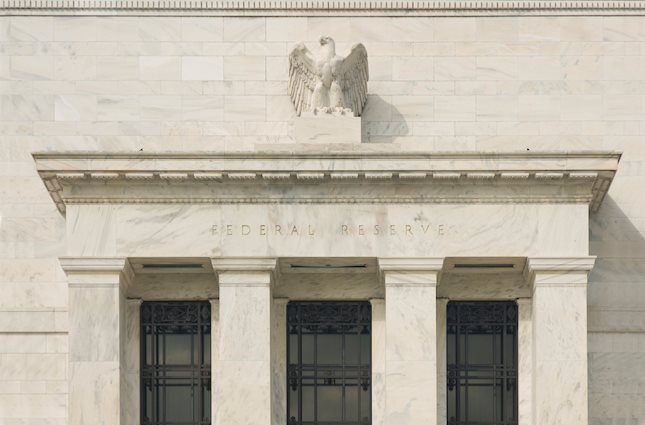- The Australian Dollar recovers intraday losses as an Iranian official states no immediate plans for retaliation against Israeli airstrikes.
- Australia’s equity market falls to a two-month low of 7,489 on Friday.
- The US Dollar gained ground after hawkish remarks from Fed officials made on Thursday.
The Australian Dollar (AUD) pares losses after expectations of de-escalating geopolitical tensions as an Iranian official states no immediate plans for retaliation against Israeli airstrikes. The AUD/USD pair dropped as riskier assets faced pressure due to heightened risk aversion across financial markets on Friday. This sentiment intensified following confirmation from ABC News that Israeli missiles had struck a site in Iran, exacerbating tensions in the Middle East.
The Australian Dollar (AUD) faces challenges alongside a decline in the ASX 200 Index on Friday, nearing its two-month low of 7,489. This trend was influenced by weak cues from Wall Street overnight. Additionally, Australia’s 10-year government bond yield fell below 4.3%, retracting from over four-month highs, as investors anticipated a dovish outlook from the Reserve Bank of Australia (RBA) regarding monetary policy.
The US Dollar Index (DXY), which measures the US Dollar (USD) against six major currencies, advances amid heightened concerns over the potential escalation of the Israel-Gaza conflict in the Middle East. This has attracted investors seeking safe-haven assets. Furthermore, hawkish remarks from Federal Reserve (Fed) officials on Thursday triggered a surge in US Treasury yields and the US Dollar, subsequently exerting downward pressure on the AUD/USD pair.
Traders are expected to closely monitor upcoming speeches from Federal Reserve officials. Atlanta Fed President Raphael Bostic is set to partake in a moderated discussion regarding the US economic outlook at the University of Miami, Florida. Additionally, Chicago Fed President Austan Goolsbee is anticipated to participate in a moderated Q&A session at the Association for Business Journalists 2024 SABEW Annual Conference in Chicago.
Daily Digest Market Movers: Australian Dollar depreciates on risk aversion, dovish RBA outlook
- According to Reuters, citing Iran’s Fars News Agency, locals reported hearing explosions at the central Isfahan airport. However, the cause of these explosions remains unknown. However, Iranian media has refuted reports of a foreign attack on Iranian cities, including Isfahan.
- Atlanta Fed President Raphael Bostic highlighted that US inflation is excessively high and emphasized that the Fed still needs to make progress on addressing inflation. Meanwhile, New York Fed President John Williams stressed the Fed's commitment to being data-dependent and expressed that he does not currently perceive an immediate need to lower interest rates.
- US Initial Jobless Claims reported a figure of 212,000 for the week ending on April 12, compared to the expected 215,000.
- US Philadelphia Fed Manufacturing Survey showed an improvement in the manufacturing sector trends with a higher reading of 15.5 for April, exceeding the expected 1.5 and 3.2 prior.
- US Existing Home Sales Change (MoM) reduced by 4.3% in March, swinging from the previous increase of 9.5%.
- Australia’s Employment Change posted a reading of -6.6K for March, against the expected 7.2K and 117.6K prior. Unemployment Rate rose to 3.8% in March, lower than the expected 3.9% but higher than the previous reading of 3.7%.
Technical Analysis: Australian Dollar falls below the psychological level of 0.6400
The Australian Dollar trades around 0.6390 on Friday. The latest break below the descending channel on the daily chart denotes a strengthening of the bearish bias. Additionally, the 14-day Relative Strength Index (RSI) suggests a bearish sentiment for the AUD/USD pair as it remains below the 50 level. Notable support is identified at the major level of 0.6350, following the psychological level of 0.6300. On the upside, immediate resistance for the AUD/USD pair is anticipated at the psychological level of 0.6400. A breakthrough above the latte could lead the pair to explore the region around the major level of 0.6450 and the nine-day Exponential Moving Average (EMA) at 0.6455.
AUD/USD: Daily Chart
Australian Dollar price today
The table below shows the percentage change of Australian Dollar (AUD) against listed major currencies today. Australian Dollar was the strongest against the New Zealand Dollar.
| USD | EUR | GBP | CAD | AUD | JPY | NZD | CHF | |
| USD | -0.08% | -0.07% | -0.12% | 0.07% | -0.09% | 0.17% | -0.44% | |
| EUR | 0.08% | 0.02% | -0.04% | 0.16% | 0.00% | 0.25% | -0.36% | |
| GBP | 0.07% | -0.01% | -0.06% | 0.16% | -0.01% | 0.24% | -0.38% | |
| CAD | 0.13% | 0.04% | 0.07% | 0.22% | 0.04% | 0.29% | -0.32% | |
| AUD | -0.07% | -0.19% | -0.16% | -0.21% | -0.17% | 0.09% | -0.53% | |
| JPY | 0.08% | 0.03% | 0.02% | -0.02% | 0.17% | 0.25% | -0.35% | |
| NZD | -0.17% | -0.23% | -0.22% | -0.29% | -0.08% | -0.26% | -0.61% | |
| CHF | 0.44% | 0.36% | 0.37% | 0.32% | 0.52% | 0.35% | 0.61% |
The heat map shows percentage changes of major currencies against each other. The base currency is picked from the left column, while the quote currency is picked from the top row. For example, if you pick the Euro from the left column and move along the horizontal line to the Japanese Yen, the percentage change displayed in the box will represent EUR (base)/JPY (quote).
Australian Dollar FAQs
One of the most significant factors for the Australian Dollar (AUD) is the level of interest rates set by the Reserve Bank of Australia (RBA). Because Australia is a resource-rich country another key driver is the price of its biggest export, Iron Ore. The health of the Chinese economy, its largest trading partner, is a factor, as well as inflation in Australia, its growth rate, and Trade Balance. Market sentiment – whether investors are taking on more risky assets (risk-on) or seeking safe havens (risk-off) – is also a factor, with risk-on positive for AUD.
The Reserve Bank of Australia (RBA) influences the Australian Dollar (AUD) by setting the level of interest rates that Australian banks can lend to each other. This influences the level of interest rates in the economy as a whole. The main goal of the RBA is to maintain a stable inflation rate of 2-3% by adjusting interest rates up or down. Relatively high interest rates compared to other major central banks support the AUD, and the opposite for relatively low. The RBA can also use quantitative easing and tightening to influence credit conditions, with the former AUD-negative and the latter AUD-positive.
China is Australia’s largest trading partner so the health of the Chinese economy is a major influence on the value of the Australian Dollar (AUD). When the Chinese economy is doing well it purchases more raw materials, goods and services from Australia, lifting demand for the AUD, and pushing up its value. The opposite is the case when the Chinese economy is not growing as fast as expected. Positive or negative surprises in Chinese growth data, therefore, often have a direct impact on the Australian Dollar and its pairs.
Iron Ore is Australia’s largest export, accounting for $118 billion a year according to data from 2021, with China as its primary destination. The price of Iron Ore, therefore, can be a driver of the Australian Dollar. Generally, if the price of Iron Ore rises, AUD also goes up, as aggregate demand for the currency increases. The opposite is the case if the price of Iron Ore falls. Higher Iron Ore prices also tend to result in a greater likelihood of a positive Trade Balance for Australia, which is also positive of the AUD.
The Trade Balance, which is the difference between what a country earns from its exports versus what it pays for its imports, is another factor that can influence the value of the Australian Dollar. If Australia produces highly sought after exports, then its currency will gain in value purely from the surplus demand created from foreign buyers seeking to purchase its exports versus what it spends to purchase imports. Therefore, a positive net Trade Balance strengthens the AUD, with the opposite effect if the Trade Balance is negative.
Information on these pages contains forward-looking statements that involve risks and uncertainties. Markets and instruments profiled on this page are for informational purposes only and should not in any way come across as a recommendation to buy or sell in these assets. You should do your own thorough research before making any investment decisions. FXStreet does not in any way guarantee that this information is free from mistakes, errors, or material misstatements. It also does not guarantee that this information is of a timely nature. Investing in Open Markets involves a great deal of risk, including the loss of all or a portion of your investment, as well as emotional distress. All risks, losses and costs associated with investing, including total loss of principal, are your responsibility. The views and opinions expressed in this article are those of the authors and do not necessarily reflect the official policy or position of FXStreet nor its advertisers. The author will not be held responsible for information that is found at the end of links posted on this page.
If not otherwise explicitly mentioned in the body of the article, at the time of writing, the author has no position in any stock mentioned in this article and no business relationship with any company mentioned. The author has not received compensation for writing this article, other than from FXStreet.
FXStreet and the author do not provide personalized recommendations. The author makes no representations as to the accuracy, completeness, or suitability of this information. FXStreet and the author will not be liable for any errors, omissions or any losses, injuries or damages arising from this information and its display or use. Errors and omissions excepted.
The author and FXStreet are not registered investment advisors and nothing in this article is intended to be investment advice.
Recommended content
Editors’ Picks

AUD/USD trades modestly flat above 0.6400 after Aussie trade data
AUD/USD reacts little to better-than-expected Australian Goods Trade Balance data and remains in a range above 0.6400 early Thursday. Rising bets for an early RBA rate cut cap the Aussie's upside amid China's economic woes and US-Sino trade war fears. Eyes turn to US data, Fedspeak.

USD/JPY fades the dovish BoJ commentary-led uptick above 150.50
USD/JPY is reversing the bounce to near 150.70 in the Asian session on Thursday. The pair remains weighed down by rising bets for another BoJ rate hike this month, shrugging off the dovish comments from BoJ policymaker Nakamura and a modest recovery in the US Treasury bond yields.

Gold price lacks firm near-term direction and is stuck in a familiar range
Gold price extends its sideways consolidative price move in a familiar range, awaiting a fresh catalyst before the next leg of a directional move. Geopolitical tensions, trade war fears and the overnight decline in the US bond yields offer support to the safe-haven XAU/USD.

Ripple's XRP could see a price rebound despite retail activity decline, RLUSD launch delay
XRP traded near $2.4 on Wednesday as Ripple Labs clarified that its RLUSD stablecoin will not debut on exchanges despite a rumored launch among crypto community members. Amid a sharp decline in XRP's price, on-chain data shows the remittance-based token still has the potential to resume its rally.

Four out of G10
In most cases, the G10 central bank stories for December are starting to converge on a single outcome. Here is the state of play: Fed: My interpretation of Waller’s speech this week is that his prior probability for a December cut was around 75% before the data.

Best Forex Brokers with Low Spreads
VERIFIED Low spreads are crucial for reducing trading costs. Explore top Forex brokers offering competitive spreads and high leverage. Compare options for EUR/USD, GBP/USD, USD/JPY, and Gold.
